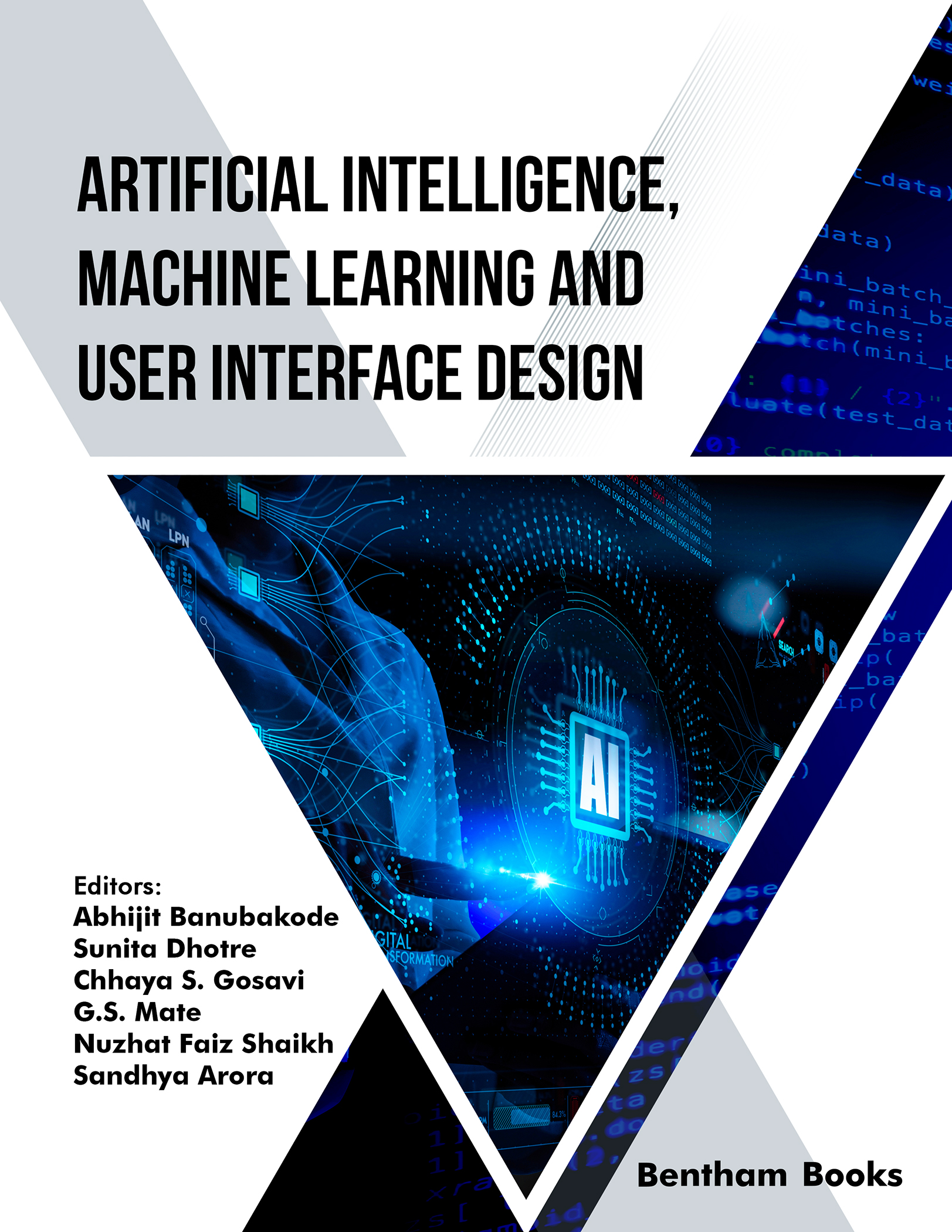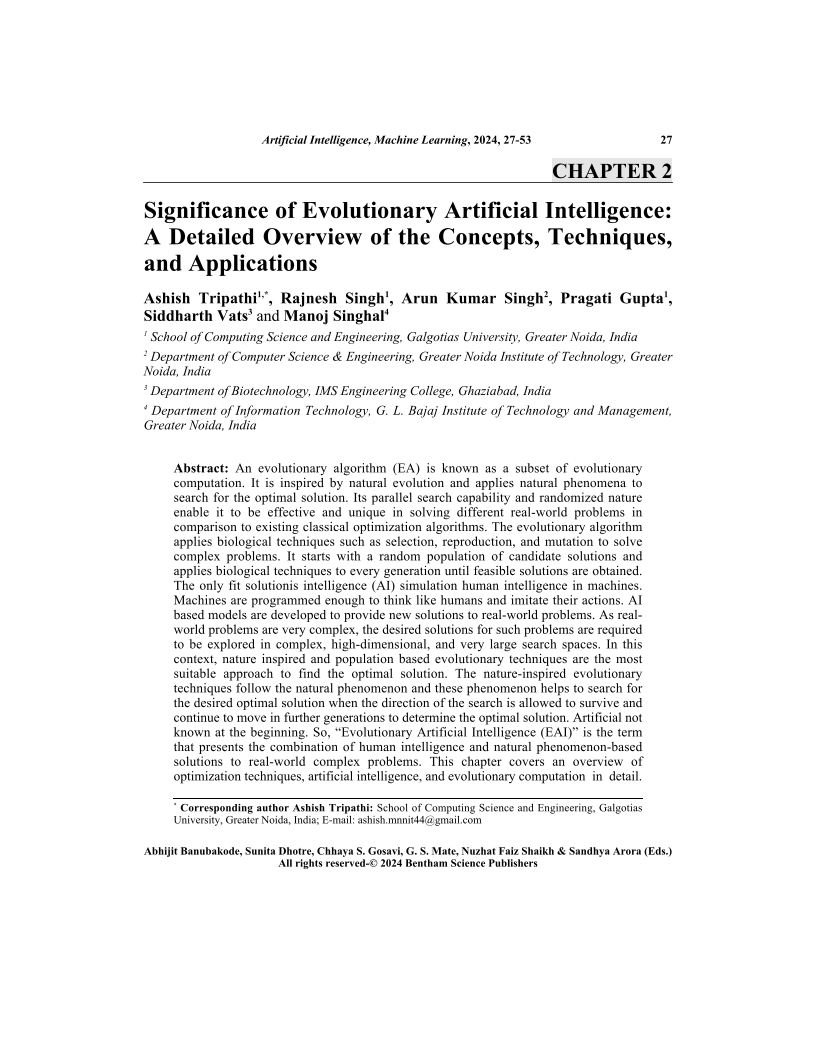Significance of Evolutionary Artificial Intelligence: A Detailed Overview of the Concepts, Techniques, and Applications

- Authors: Ashish Tripathi1, Rajnesh Singh2, Arun Kumar Singh3, Pragati Gupta4, Siddharth Vats5, Manoj Singhal6
-
View Affiliations Hide AffiliationsAffiliations: 1 School of Computing Science and Engineering, Galgotias University, Greater Noida, India 2 School of Computing Science and Engineering, Galgotias University, Greater Noida, India 3 Department of Computer Science & Engineering, Greater Noida Institute of Technology, Greater Noida, India 4 School of Computing Science and Engineering, Galgotias University, Greater Noida, India 5 Department of Biotechnology, IMS Engineering College, Ghaziabad, India 6 Department of Information Technology, G. L. Bajaj Institute of Technology and Management, Greater Noida, India
- Source: Artificial Intelligence, Machine Learning and User Interface Design , pp 27-53
- Publication Date: May 2024
- Language: English
Significance of Evolutionary Artificial Intelligence: A Detailed Overview of the Concepts, Techniques, and Applications, Page 1 of 1
< Previous page | Next page > /docserver/preview/fulltext/9789815179606/chapter-2-1.gif
An evolutionary algorithm (EA) is known as a subset of evolutionary computation. It is inspired by natural evolution and applies natural phenomena to search for the optimal solution. Its parallel search capability and randomized nature enable it to be effective and unique in solving different real-world problems in comparison to existing classical optimization algorithms. The evolutionary algorithm applies biological techniques such as selection, reproduction, and mutation to solve complex problems. It starts with a random population of candidate solutions and applies biological techniques to every generation until feasible solutions are obtained. The only fit solutionis intelligence (AI) simulation human intelligence in machines. Machines are programmed enough to think like humans and imitate their actions. AI based models are developed to provide new solutions to real-world problems. As realworld problems are very complex, the desired solutions for such problems are required to be explored in complex, high-dimensional, and very large search spaces. In this context, nature inspired and population based evolutionary techniques are the most suitable approach to find the optimal solution. The nature-inspired evolutionary techniques follow the natural phenomenon and these phenomenon helps to search for the desired optimal solution when the direction of the search is allowed to survive and continue to move in further generations to determine the optimal solution. Artificial not known at the beginning. So, "Evolutionary Artificial Intelligence (EAI)" is the term that presents the combination of human intelligence and natural phenomenon-based solutions to real-world complex problems. This chapter covers an overview of optimization techniques, artificial intelligence, and evolutionary computation in detail. A detailed discussion on evolutionary artificial intelligence, followed by applications of evolutionary machine learning is also presented. After that, the significance of evolutionary artificial intelligence in decision making has been discussed. Finally, the conclusion has been given, which shows the summary of the chapter.
-
From This Site
/content/books/9789815179606.chapter-2dcterms_subject,pub_keyword-contentType:Journal105

